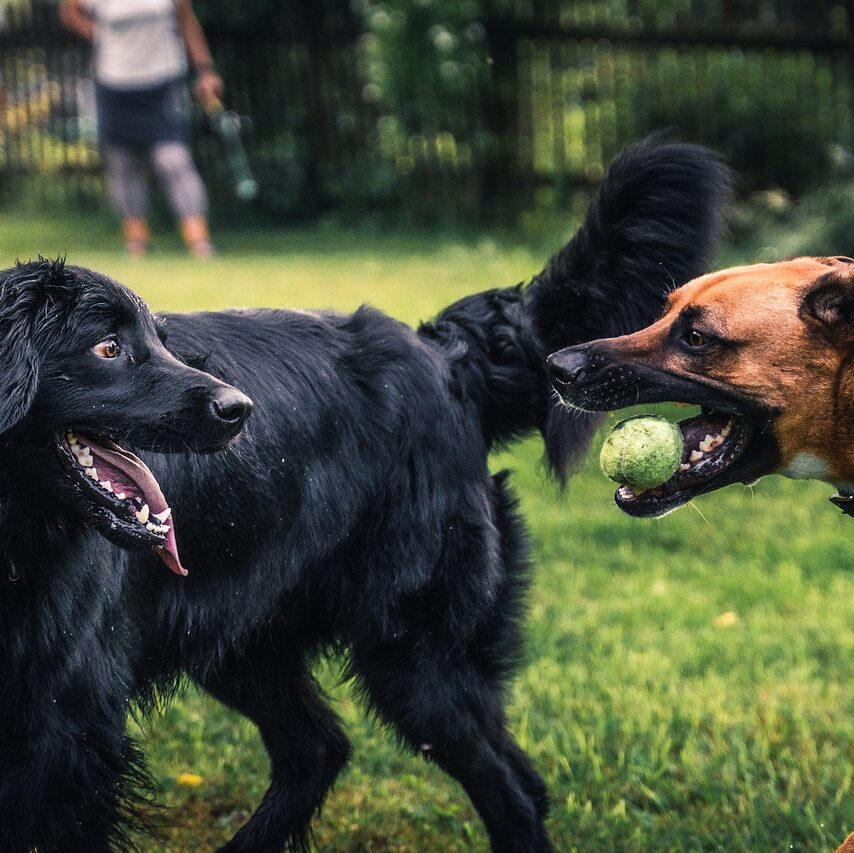Are you concerned about how to introduce your dog to visiting dogs? An interaction with a visiting dog is an excellent way to evaluate how your dog would accept a new puppy. We give you tips on how to introduce visiting dogs.
Depending on what type of dogs your friends have, or if they’re simply dog sitting, you may be nervous about how the dogs will get along.
We are here to help you with 7 superb tips to make introductions for dogs smoother!
Tips on how to introduce visiting dog into the house
You never know when your friends will come for a visit and bring their dog around or when your friends will ask you to look after their dogs for a night or two. Besides, introducing your dog to a visiting dog is an excellent way to evaluate how your dog would accept a new puppy. It also shows you if you can handle two dogs and are ready for a second dog. Hence, knowing how to introduce a visiting dog to your dog may come in handy. After all, you don’t want to make a mistake and start on the wrong foot. If you ever hope for them to be friends, dogs should have positive experiences with each other. We’ll see how it goes.
1. Introduce From A Distance
Here’s how it works:
- Walk your dog from a neutral location you chose about 30-50 feet away from the visitor dog and their owner.
- In this way the dogs can see each other but they can’t interact or touch so they have time to get used to each other’s presence.
- Slowly narrow the distance and praise with high-value treats as long as your dog shows no sign of aggression or excitement.
Another way to introduce dogs on a walk is to walk them toward each other.
Be careful not to hold the leash too tightly, or you may send the wrong message to the other dog
- You and the other owner are at opposite ends and start to walk each other’s dogs.
- As long as the dogs are calm, let the dogs sniff each other when they are close enough.
- Praise your dogs for correct behaviour and call them apart after a few seconds.
- Praise and reward your dog if they remain calm while the other dog approaches.
- Moving slowly and stopping if your dog shows signs of discomfort. Talk calmly and continue if the dog is relaxed.
- When the dogs are calm, they sniff at each other and break them apart after a few seconds.
- Repeat the exercise – The first step is to build a positive connection before taking the dogs home.
2. Choose a neutral ground
Before two dogs meet for the first time, first impressions are important, as with humans. It is crucial that the meeting goes smoothly to ensure that both dogs have a positive experience with each other’s presence. There are two reasons for this: It is better to avoid triggering the dogs’ territorial and protective instincts. For example, you can park a dog at a nearby park, a field or a parking lot. Never allow friends or family members to leave their visiting dogs inside the home without proper introductions. Both dogs are too stressed to allow the introduction to go smoothly and could react defensively. If you’re considering adoption of a puppy, it is even more important to introduce the dog on neutral ground to avoid conflicts.
3. Consider The dog personality in the first place
Before agreeing to accept a relative’s dog in your home or a friend for the sake of the dog, you should examine the personalities of the dogs. Think about how your pet reacts to the presence of other dogs. Is the dog pushy, timid, or aggressive? Dominant dogs may be more prone to cope with puppies or submissive dogs because they pose less threat. On the other hand, snoutier or timid animals will fare better with mellow dogs who will not push them around. Talk to the owner of the other dog about their pet’s personality to see if meeting the two dogs is a good idea. Some dogs just don’t play well with other dogs and you can’t do much about it without extensive socialization. Sadly, if your relatives bring their pets over for the holidays, you may not have much choice. In such cases, separating the dogs may be the best course of action.
4. Have the dogs on a leash
When you introduce your dog to a visiting dog, you should keep them both on a leash. One cannot know how your dog will react to a visiting dog or how the other dog will behave. Don’t make assumptions because dogs can be unpredictable when stressed out. The tether is also a fit for your peace of mind. You’ll be able to divide the two dogs immediately and conduct damage control. Usually, some dogs are reactive when tagged on the animals. They bark excessively and run on the leash, but are calm when off the leash. If that is the case with your pet, you should have the meeting in a secure, enclosed area.
5. Oversee
The dogs have to be monitored, whether you’re dog is in its own house, boarding a friend’s dog or living with a relative dog. Even if the dogs were out on their best behavior, you never know how your dog would react when another dog enters their territory. The dog may become defensive, protective or possessive and you should be there to de-escalating the situation. If nobody is in sight, you can keep the dogs in separate rooms or use baby gates to keep them away from each other. A barrier also works if the dogs don’t get along but must stay at one house.

6. Check body language
When you introduce visiting dogs or when dogs are seated, the most important thing is to observe body language. You should know if your introduction is good or you need to take a step back and reevaluate. If you reach the point where the dogs are fighting or biting it would be hard to change that first impression, and the dogs will stay careful. So look for signs of aggression, such as:
- Hind legs are raised,
- Rigid or body tension,
- Lips and showing teeth held back.
Separate the dogs immediately and don’t wait for the situation to escalate. Test again when both dogs are relaxed and calm. If you get the same results, you probably will not be able to comfortably sit together the two dogs or welcome visiting dogs together. If the introduction walks go to plan and the dogs don’t mind each other’s presence, you can bring them home. Together walk the dogs to build on the foundation of the connection you’ve already built.
7. Take preventative measures
When you have a visiting dog, there could be an aggression of resources like food, attention and toys.
To avoid conflict and problems: Do not let the visiting dog use your pet’s toys and bed. Ask your friend/relative to bring the pet of the visitor’s belongings to your house.
If you must separate fighting dogs, make loud sounds, throw a blanket on them or go down hosed down dogs. Never grab the face of the dog or collar, as you can be bitten. Specialists also recommend whereby you grab your dog’s side legs and whisk them away from the other pet. But that is still risky and requires another person to handle the second dog.
The introduction of your dog to a visiting dog is not rocket science, but it takes time and requires good management skills and steel nerves. Dogs sense an anxiety and uncertainty and if you feel scared or anxious, they will know it and react defensively.If you are not certain that your dog will like others, you should say this when relatives and friends ask to take their pet with them. Don’t place your pet in an uncomfortable situation because you’ll lose the trust of your pet.



